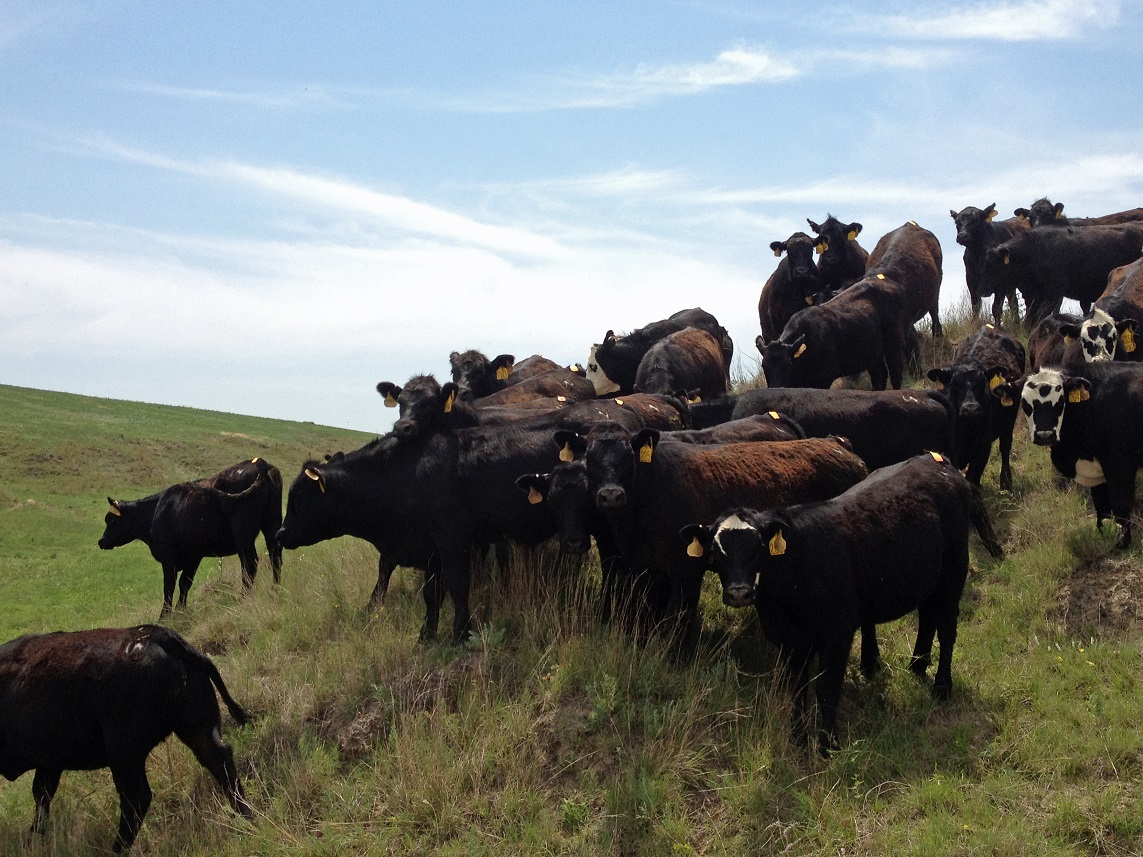
By B. T. Tibbitts, T. L. Meyer, D. J. Kelly, and R. N. Funston
Summary by Rick Funston, NE Extension Beef Cattle Reproductive Physiologist
This study evaluated how a fixed-time AI (FTAI) protocol versus a modified estrus detection with fixed time AI (MTAI) protocol affected AI and final pregnancy rates.
Reproductive technologies such as estrus synchronization and AI have limited adoption in the beef industry, partially due to added labor. Protocols that limit labor and cattle processing have a greater potential of being adopted. In the past, pregnancy rates were improved when estrus detection was used. In this study, similar pregnancy rates were achieved without the added labor of estrus detection, likely due to newer protocols that more tightly synchronize estrus.
Nine hundred-seventy one Angus-based, crossbred heifers (average weight 763 ± 31 lb) were estrus synchronized via a melengestrol acetate-prostaglandin F2α (MGA-PG) protocol. An estrus detection aid (patch) was applied at PG injection. Each heifer was assigned a patch score (reflecting the amount of rub-off coating removed) at AI to reflect estrus status. At 72 h following PG, the FTAI heifers received 2-mL gonadotropin-releasing hormone (GnRH) injection and were inseminated. The MTAI heifers were estrus detected at 58 and 70 hours after PG. Approximately 72 hour after PG, MTAI heifers were inseminated in the following order:
1. heifers in estrus at 58 hours after PG
2. heifers in estrus at 70 hours after PG, and
3. heifers not appearing in estrus at either observation. Heifers not expressing estrus received GnRH at AI.
Pregnancy was determined by ultrasound 51 days after AI. Regardless of treatment, heifers exhibiting estrus (reflected by patch score) had greater (P < 0.01) AI conception rates than heifers not expressing estrus (71 and 66 ± 5% for FTAI vs. MTAI, respectively, versus 47 and 53 ± 9% in nonestrus heifers for FTAI and MTAI, respectively).
However, overall AI pregnancy rate (62 ± 5%) and final pregnancy rates were similar between treatments (P ≥ 0.49; 97 ± 3%). Similar AI pregnancy rates were achieved without the added labor of estrus detection.
This research report can be read in its entirety in the 2017 Nebraska Beef Cattle Report at: http://beef.unl.edu/documents/2017-beef-report/201703-Timed-Insemination-vs-Modi-ed-Estrus-Detection-in-Beef-Heifers.pdf . Corrected Figures 1 & 2 can be seen here: http://go.unl.edu/8fh4
To listen to BeefWatch podcasts go to: https://itunes.apple.com/us/podcast/unl-beefwatch/id964198047 or paste http://feeds.feedburner.com/unlbeefwatch into your podcast app.